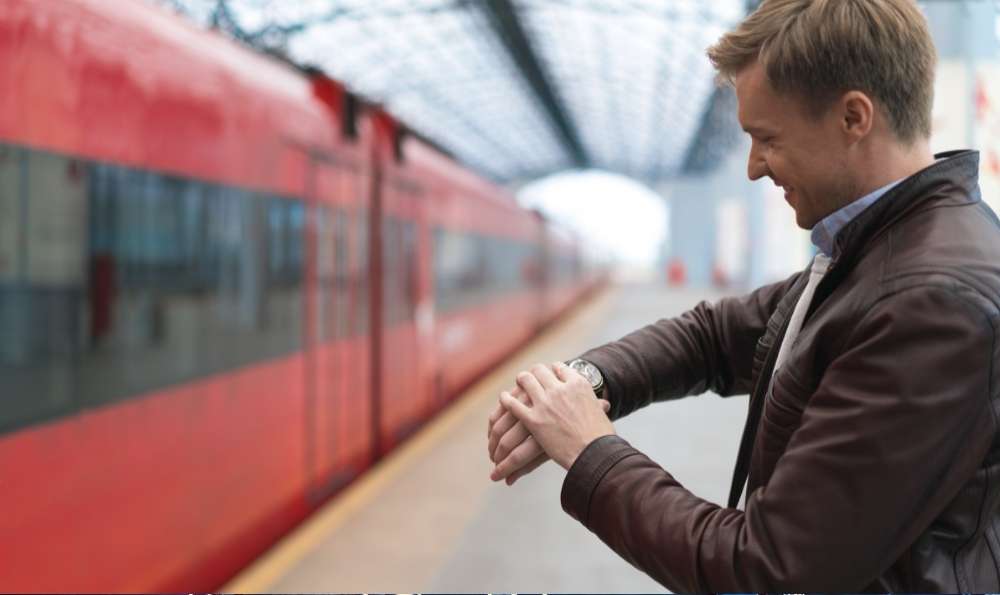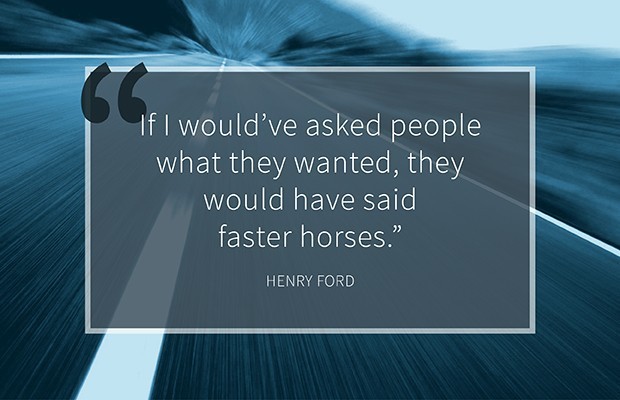Increasing satisfaction and ridership will need new thinking
This is the time of year when we stare into our crystal balls and think, “what will be the top trends facing us in the coming year?” While 2022 might go down as the “Is this normal yet?” year, 2023 may turn out to be the “This is how it’s going to be” year.
We’re settling into something more—predictable—and the path ahead seems a little more clear.
To set the stage for this post, and some of the macro trends facing the industry, the end-of-year episode of Transit Unplugged looking back at 2022 and ahead to 2023 is a must-listen to show. Guests Mohamed Mezghani (Secretary General of UITP), Jeremy Yap ( Chief Executive, LTA, Vice President, UITP Executive Board), Rod Jones (Portfolio Leader, Head of Americas, Modaxo), and Julie Timm (CEO, Sound Transit) brought great insights into the issues facing public transport today. From investment to climate resiliency, changing ridership patterns to technology trends, the issues they raised should be front and center for any agency or rail property. However, all their trends are macro, multi-year trends; challenges we’re not going to solve in a year or two or three. They are long-term challenges to work on over the next 5 to 10 years.
But over the course of 2023, we’re going to see two trends that will be worked on and a third that will support the other two. Over the course of the year, we’re going to see a lot of attention placed on safety (rider and worker) and the transition to zero emissions fleets. Those two things will be supported by renewed leadership from the people leading transit agencies in the post-pandemic era.
While safety and zero emissions don’t have much to do with each other, strong leadership is needed for either of them to be successful. Addressing safety concerns might mean making some hard choices and tough stances to make riders and workers feel safe on our buses and trains. Moving to zero emissions fleets won’t be complete this year, but this year we will see significant work towards building the infrastructure needed to make the switch. There aren’t going to be one-size-fits-all solutions for safety or going green; we’re going to need new ideas to make it happen, and that’s where leaders come in.
Improving safety starts with knowing where you stand now
There are two sides to improving safety on public transit: managing incidents and managing perceptions. The tragedies last year didn’t have a single cause or a simple band-aid solution, but the issues they raise have to be handled because that’s critical to dealing with the other side of improving safety on transit—perception.
Dealing with increases in crime on buses and trains (as was seen in Chicago) is going to need a combination of enforcement, education, and help from outside transit (as seen in St. Louis). Putting more police and security on buses and trains does help reduce crime—when put in the right places at the right times. But, as Steve Martingano (Deputy Chief, Denver RTD Transit Police) said in his interview on Transit Unplugged, often the incidents his officers dealt with weren’t criminal as much as they were medical. Different approaches are needed when you’re dealing with issues like mental illness and addiction versus criminality.
Transit safety goes beyond the bus stop, transit is part of the solution for helping societies’ most vulnerable, but not the whole solution. Transit needs dedicated partners to connect people in need with people who can help, as Leslie Richards (CEO SEPTA) said last year at APTA EXPO.
Changing perceptions of safety is harder. Frequent transit riders might feel safe most of the time and know when a major incident happens, it’s not “normal,” but infrequent and casual riders might see these incidents as “transit is unsafe." There has to be an overall perception that transit is the convenient and safe way to get around the city. Combatting perceptions, and improving enforcement, require the same things: data and information.
Putting all your safety data together—driver assaults, police incidents, accidents—into a single place lets you see, and show, the big picture. You can target the right enforcement to the right places at the right times. You might increase enforcement overall but use targeted enforcement in problem areas or deploy special teams supporting mental health and addictions where they are needed most. But you can’t do that if you don’t know where your problems are or an idea of what issues you need to deal with. Without reliable data, you’re left playing safety Whac-A-Mole with haphazard tactics.
Data in hand you can battle the perceptions of safety on your network. You can point to overall low numbers of incidents or how you are using targeted approaches to deal with problems. Over time you can show how your efforts have paid off and how you are making your system better for everyone.
These data also can help you get support from all levels of government to address the real sources of your issues. There is a big difference between dealing with true criminal activity versus dealing with mental health, addiction, and homelessness issues. The former is a policing issue, the later is a societal one that transit can (and does) play a role in. But one it needs support from all levels of government to do.
Steve Martingano’s ground-breaking approach at Denver RTD pairing mental health and now social service workers with transit police was due entirely to looking at the data and seeing the root cause of incidents. Steve and his team use their data to show the city what is needed and offer insight into street homelessness, healthcare, and poverty issues in his region.
The transition to zero emissions will be driven by technology
Today’s diesel buses are as much rolling computers as they are transportation, but that’s nothing compared to zero emissions buses (ZEBs). Doesn’t matter if it’s battery electric or hydrogen, these vehicles are powered, and supported, by a vast amount of tech. And the tech doesn’t stop at the bus door, zero emissions-aware technology will touch every part of your organization. From people to parts, dispatch to planning, operations to maintenance—everything that keeps your agency running has to handle ZEBs seamlessly.
Some transitions will be easier. Managing certifications and licenses for employees, is manageable, but as Tyler Dvorak (Product Dir Mobility Planning & Scheduling, Trapeze Group) talked about last year in his post on the transition to zero emissions, this is one of the most fundamental shifts in the industry since we stopped using horses. The calculus for planning and scheduling will be tremendously complex. It’s not enough to know a bus can drive this far on a tank of diesel, now you need to understand how topography, weather, and even the route itself affects zero emissions vehicles. If your planning and scheduling tools can’t help you make those changes, the transition will be more difficult.
On the maintenance side, working on battery electric buses is more akin to being an electrician than a mechanic. From the batteries to the motors to the braking systems, these buses need new skill sets and new systems to support them. While hydrogen powered buses are similar to other gaseous fuels, they have their own unique requirements. And if you’re planning on deploying multiple zero emissions technologies, you have a much more complex yard to manage—especially if you consider this is a transition and you’ll have fossil-fuel vehicles in the mix for some time to come.
The ZEB Centers of Excellence like Lauren Skiver CEO of SunLine and Kirt Conrad CEO of STARK have at their agencies, show not only the importance of technology and training with ZEBs but also how strong leadership is essential to your success.
Great leaders will make the difference
We’ve seen amazing leadership across the industry for the past three years. These have not been easy times. This wasn’t trial by fire, is was trial by industrial blast furnace.
But we got through it.
As we are settling into some semblance of what “normal” is, it’s our leaders who are going to see us to the finish line. Rider and operator safety are hugely important issues. The data are conflicting whether incidents are up, down, or the same compared to pre-pandemic times, but there is no question safety is on everyone’s mind. Our leaders are right there looking for solutions to safety.
It’s our transit leaders who have the tough job of figuring out how transit fits into the social fabric. How do we discourage, prevent, and punish criminal behavior, while helping those in need, those who the issue isn’t criminal, but medical? There are great examples and models out there of people stepping up and saying, no we won’t tolerate criminality, but we’re going to help those in need. If we need develop new fare structures or be more compassionate with fare enforcement, and it helps make a better more equitable system. That’s a net win. If a stronger police presence can prevent tragedies, everyone will feel safer on transit.
But it’s not going to be easy.
And like safety, the transition to zero emissions fleets isn’t cut and dried. There isn’t a cookie-cutter answer. And we’re going to make mistakes. There are going to be false steps and fixes. But the leaders like you hear on Transit Unplugged each week have two things that sets them apart: vision and plans. Leaders like Rich Davey (President New York City Transit, MTA) and Dave Reage (Executive Director, Halifax Transit) have short and long-term visions for their systems. They see what has to be done now to get where they need to be later. In the Seattle Times, Julie Timm said it’s too soon to make rash decisions about things like commuter rail, she has a vision for Sound Transit and k knows it will need time to play out.
Great leaders put their visions into action with real plans. Plans based on data and a true desire to improve their communities. Plans that need time (and money) to implement. Most importantly, their visions and plans need data from their entire agency to make smart decisions.
You can’t make good decisions with only part of the picture. You can’t fix on time performance issues if you only look at what’s going on after a bus leaves the yard. You need the whole picture from maintenance to personnel to scheduling. If you can’t track how you’re doing against your key performance indicators with up to the minute data, how can you know if you’re moving in the right direction? If it takes months to get an answer to “did this change to the schedule help or hurt,” you can’t course correct when you need to.
This year technology will bring this year’s trends to life
Safety, zero emissions, and leadership, all three will rely on fundamental updates to technology to come together. In their own way, from data consolidation to support for zero emissions vehicles to interactive reports to drive insightful decision-making, the right investments in technology now will pay dividends this year and, in the years to come.
The trends this year might seem wildly different from each other, but all three rely on technology, software, and data to come together.
 Bus
Bus Rail
Rail Paratransit
Paratransit


